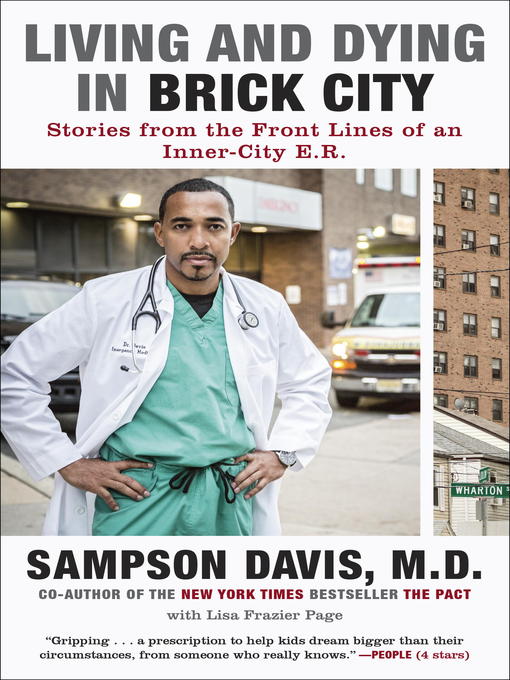
Living and Dying in Brick City
Stories from the Front Lines of an Inner-City E.R.
داستانهایی از خطوط مقدم یک شهر مرکزی E.
کتاب های مرتبط
- اطلاعات
- نقد و بررسی
- دیدگاه کاربران
نقد و بررسی

March 18, 2013
Davis (co-author of The Pact: Three Young Men Make a Promise and Fulfill a Dream) is clearly of, from, and for the Brick CityâNewark, NJâand in his previous book and work with his Three Doctors Foundation he made himself an inspiration to the kind of inner-city youth he was. Now writing about the urban African-American experience on the scale of Newark and the United States simultaneously, it is unclear whom Davis envisions as his audience. Identically-structured chapters feature a short patient story, a teaching point or moral, major issues in health and health care for African Americans, and concise public health information from government agencies. Though formulaic, patients are not made tokens, and medical informationâdealing with topics ranging from gang violence to depression to obesityâ is woven throughout. The most fully developed character, however, is Davis himself; he details his childhood, family, and life with both his own child and "adopted" children he has mentored in the community. Davis closes by discussing his leave from clinical medicine for full-time community and advocacy work, reflecting on how it's all part of the same vocation: to "help save lives".

January 1, 2013
An emergency-room doctor relates his experiences to the wider emergency of inadequate health care for inner-city residents in places like Newark, N.J., where he grew up and practiced medicine. In two earlier books (The Bond: Three Young Men Learn to Forgive and Reconnect with their Fathers, 2007, etc.), Davis and two boyhood friends described their experiences growing up on the Newark streets--how, despite the odds, they overcame the violence and chaos of life in a ghetto environment and became medical practitioners. Here, Davis describes the serious health conditions of patients he treated in the emergency room who lacked any other medical care, a "too-often overlooked population." Most poignant are the descriptions of his meetings with former street companions as they were wheeled into the emergency room, the victims of gunshot wounds, drug overdoses and the like. Most frustrating were the patients who faked ailments to legally acquire drugs for recreational purposes. The author cites the shocking statistic that in the U.S., deaths from overdoses of prescription painkillers exceed those from heroin and cocaine combined. Davis also faced high incidences of sexually transmitted diseases among black women, in his opinion spread because of unprotected sex. Tragically, his older sister, who had inspired him to become a doctor, died of AIDS. At the age of 27 (after his first year as a resident), Davis received an award for community service from Essence magazine. A page-turning wake-up call.
COPYRIGHT(2013) Kirkus Reviews, ALL RIGHTS RESERVED.

November 1, 2012
Growing up in Newark, NJ, Davis vowed with friends George Jenkins and Rameck Hunt to rise above hardship. They all became doctors--and best-selling coauthors of books like The Pact. Here, Davis goes it alone to recount his return to the Newark Beth Israel Hospital, where he was born.
Copyright 2012 Library Journal, LLC Used with permission.

February 15, 2013
Davisan African American who grew up in a tough neighborhood in Newark, aka Brick City, beat the odds, and became an emergency room doctor in the hospital where he was bornis a likable but flawed hero. And his book is a page-turner as he and Washington Post writer and editor Page, coauthor of the best-selling memoir The Pact (2002) with Davis and his best childhood friends, create memorable scenes. To compellingly tell the story of the health crisis in poor, urban America, they draw on Davis' experiences in the emergency room and in his own family. His dad gets prostate cancer, his older sister contracts AIDS, and his older, alcoholic brother becomes paralyzed because of a fight. Davis describes trying and failing to help such emergency-room patients as a victim of domestic violence and a 700-pound woman. He tries to figure out whether sickle-cell-anemia patients who come into the ER complaining of pain truly need prescription medication or if they're just looking for an easy fix. A personal and thought-provoking look at inner-city health.(Reprinted with permission of Booklist, copyright 2013, American Library Association.)

























دیدگاه کاربران